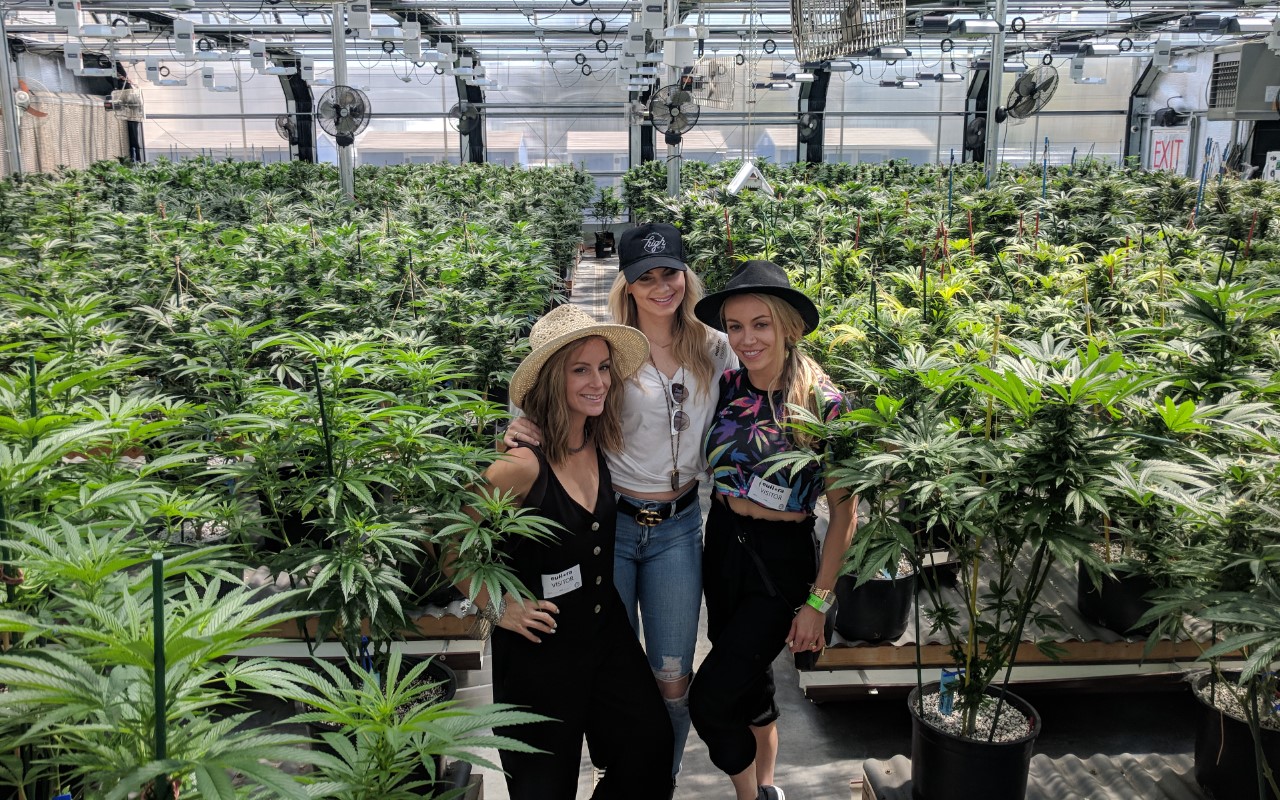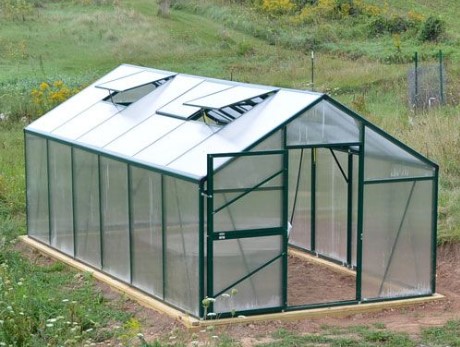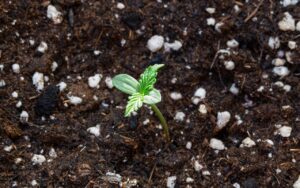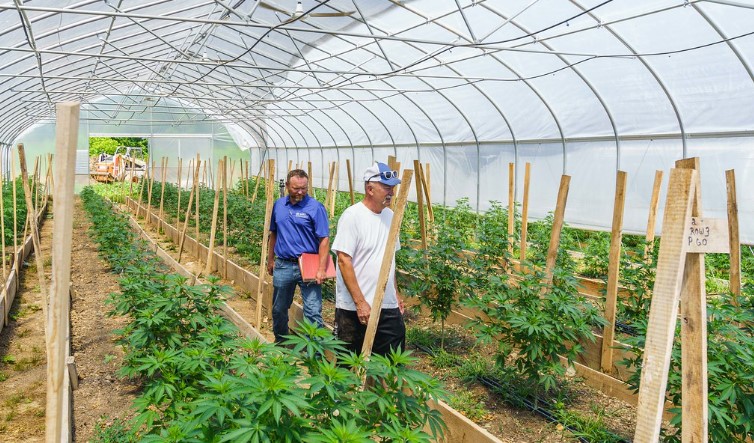Growing cannabis in a greenhouse can be a great way to harness the power of the sun while still maintaining control over your growing environment. In this article, we’ll cover everything you need to know to grow high-quality cannabis in a greenhouse, including the benefits of using a greenhouse, how to choose the right location and structure, and a step-by-step guide to setting up your greenhouse.
Table of Contents:
Benefits of Growing Cannabis in a Greenhouse
Choosing the Right Location and Structure
Best Soil Recipe for Growing Cannabis in a Greenhouse
Growing Cannabis in a Greenhouse: Step-by-Step Guide
Tips for Maintaining Your Greenhouse Environment
Harvesting and Curing Your Cannabis
Benefits of Growing Cannabis in a Greenhouse
Greenhouses offer many benefits to cannabis growers, including:
- Controlled environment: A greenhouse allows you to control the growing environment, such as temperature, humidity, and lighting, which can result in higher yields and better quality buds.
- Protection from pests and diseases: The enclosed structure of a greenhouse can help protect your plants from pests and diseases that can damage outdoor crops.
- Energy-efficient: A greenhouse allows you to harness the power of the sun, reducing the need for artificial lighting and ventilation.
- Extended growing season: By controlling the environment, you can extend the growing season beyond the traditional outdoor growing period.
Choosing the Right Location and Structure
Selecting the right location and structure for your cannabis greenhouse is a critical decision that sets the foundation for a successful cultivation venture. In this guide, we will explore the key considerations for both location and structure, empowering you to create an environment that fosters healthy plant growth, high yields, and operational efficiency.
Choosing the Ideal Location:
- Sun Exposure: Maximizing Nature’s Gift
- The amount of sunlight your cannabis plants receive directly impacts their growth and productivity. Aim for a location that receives a minimum of 6 hours of direct sunlight each day.
- Evaluate the sun’s trajectory throughout the day and across seasons to ensure consistent exposure. A southern or southeastern orientation often proves optimal for harnessing the sun’s energy efficiently.
- Wind Protection: Shielding Against the Elements
- Protecting your greenhouse from strong winds is crucial to prevent damage to both the structure and your plants.
- Utilize natural windbreaks such as existing structures, trees, or terrain features. Alternatively, consider installing artificial windbreaks like fences or barriers to mitigate the impact of strong gusts.
- Access to Water and Electricity: Lifelines of Cultivation
- Ensure convenient access to water and electricity, as these are essential for irrigation, ventilation, and lighting systems.
- Strategically position your greenhouse near a water source to facilitate irrigation. Additionally, plan for an efficient electrical layout that caters to the power requirements of your equipment without compromising safety.
- Size Matters: Tailoring to Your Needs
- The size of your greenhouse should align with your cultivation goals and available space. Carefully assess the space you have and plan accordingly.
- Consider not only your current needs but also potential future expansions. A well-thought-out sizing strategy ensures optimal space utilization and facilitates effective management.
Choosing the Optimal Structure:
- Material Selection: Weighing Advantages and Disadvantages
- Greenhouses can be constructed from glass, polycarbonate, or polyethylene, each with its unique set of benefits and drawbacks.
- Glass offers superior light transmission but may lack insulation. Polycarbonate provides insulation but diffuses light. Polyethylene strikes a balance but may require periodic replacement. Choose a material that aligns with your climate, budget, and specific cultivation requirements.
- Type of Greenhouse: Tailoring to Your Space and Needs
- Different types of greenhouses cater to various spatial constraints and cultivation preferences. Evaluate your available space and objectives before deciding on a structure.
- Freestanding greenhouses provide versatility, while lean-to structures utilize existing buildings for support. Dome-shaped greenhouses offer unique advantages. Select a type that complements your space and facilitates efficient plant management.

Setting Up Your Greenhouse
Once you’ve chosen your location and structure, it’s time to set up your greenhouse. Here are the basic steps:
Site Preparation: Creating a Solid Foundation
Before constructing your greenhouse, meticulous site preparation is essential. Start by leveling the ground to ensure a stable foundation.
Install a weed barrier to prevent unwanted vegetation from encroaching on your cannabis plants. This step not only aids in maintaining a clean environment but also minimizes competition for nutrients.
Frame Construction: The Backbone of Your Greenhouse
Building a sturdy frame is paramount to the structural integrity of your greenhouse. Follow the manufacturer’s instructions meticulously to ensure a robust and durable framework.
Consider factors such as wind resistance and load-bearing capacity when selecting materials for your greenhouse frame. The choice between aluminum, steel, or other materials will impact the structure’s longevity.
Covering Material: Choosing the Right Shield
Selecting the appropriate covering material is a critical decision that influences light penetration, insulation, and overall climate control.
Glass, polycarbonate, and polyethylene are common materials. Glass offers excellent light transmission but may lack insulation. Polycarbonate provides insulation but may diffuse light. Polyethylene balances both but may require replacement over time. Evaluate these factors based on your specific needs and local climate.
Insulation: Regulating Temperature and Humidity
Insulating your greenhouse is essential for maintaining a stable and controlled environment. This step becomes particularly vital in regions with extreme temperature variations.
Consider using double-walled materials or adding an insulating layer to minimize heat loss during colder periods. Adequate insulation ensures that your cannabis plants thrive in a consistent and comfortable climate.
Ventilation Systems: Breathing Life into Your Greenhouse
Proper ventilation is crucial for regulating temperature, humidity, and air circulation. Install fans or vents strategically to achieve optimal growing conditions.
Automated ventilation systems, such as louvers and roof vents, can enhance efficiency by responding to environmental changes. This not only promotes a healthy atmosphere for your plants but also prevents the buildup of excess humidity that could lead to mold and disease.
Lighting Setup: Balancing Natural and Artificial Light
While greenhouses benefit from natural sunlight, supplementing with artificial lighting extends the daily light exposure, especially during overcast days or short winter days.
LED grow lights are popular for their energy efficiency and customizable spectral output. Position lights to ensure uniform coverage, promoting even growth and bud development.
Irrigation Systems: Nourishing Your Cannabis Plants
Efficient irrigation is vital for the health and productivity of your cannabis plants. Install a drip irrigation system that delivers water directly to the roots, minimizing waste and reducing the risk of fungal diseases.
Incorporate a nutrient delivery system if you are using a hydroponic setup. If growing in soil, monitor moisture levels and adjust your irrigation schedule based on the growth stage of your plants.
Best Soil Recipe for Growing Cannabis in a Greenhouse
A good soil recipe for growing cannabis in a greenhouse should have the following characteristics:
- Good drainage: Cannabis plants don’t like to sit in water, so a soil mix that drains well is essential.
- Nutrient-rich: Cannabis plants require a lot of nutrients to grow, so a soil mix that is rich in organic matter and nutrients is important.
- pH balanced: Cannabis plants prefer a slightly acidic soil with a pH between 6.0 and 7.0.
Here’s a basic recipe for a good cannabis soil mix:
- 2 parts compost
- 2 parts peat
- 1 part perlite
- 1 part vermiculite
- 1 part coconut coir
- 1 cup of dolomite lime per cubic foot of soil
Mix all ingredients thoroughly and adjust the pH as necessary with dolomite lime or sulfur.
Small Batch Recipe for using in pots.
Living Soil
| Ingredient | 50-Liter Batch | 100-Liter Batch | 200-Liter Batch |
|---|---|---|---|
| Base Soil | 1 bag (50 liters) | 2 bags (100 liters) | 4 bags (200 liters) |
| Coco Coir or Peat Moss | 12.5 liters | 25 liters | 50 liters |
| Perlite or Vermiculite | 6.25 liters | 12.5 liters | 25 liters |
| Well-Aged Compost | 3.125 liters | 6.25 liters | 12.5 liters |
| Worm Castings | 3.125 liters | 6.25 liters | 12.5 liters |
| Bat Guano or Seabird Guano | 3.125 liters | 6.25 liters | 12.5 liters |
| Fish Meal | 3.125 liters | 6.25 liters | 12.5 liters |
| Kelp Meal | 6.25 liters | 12.5 liters | 25 liters |
| Bone Meal | 6.25 liters | 12.5 liters | 25 liters |
| Azomite or Rock Dust | 1-2 liters | 2-4 liters | 4-8 liters |
| Mycorrhizal Fungi | 1-2 cups | 2-4 cups | 4-8 cups |
| Beneficial Bacteria | Per product instructions | Per product instructions | Per product instructions |
No Till Living Soil Recipe
| Ingredient | 50-Liter Batch | 100-Liter Batch | 200-Liter Batch |
|---|---|---|---|
| Base Soil | 4 parts (12.5 liters) | 8 parts (25 liters) | 16 parts (50 liters) |
| Coco Coir or Peat Moss | 1 part (3.125 liters) | 2 parts (6.25 liters) | 4 parts (12.5 liters) |
| Perlite or Vermiculite | 1 part (3.125 liters) | 2 parts (6.25 liters) | 4 parts (12.5 liters) |
| Well-Aged Compost | 1 part (3.125 liters) | 2 parts (6.25 liters) | 4 parts (12.5 liters) |
| Worm Castings | 1 part (3.125 liters) | 2 parts (6.25 liters) | 4 parts (12.5 liters) |
| Kelp Meal | 1 part (3.125 liters) | 2 parts (6.25 liters) | 4 parts (12.5 liters) |
| Alfalfa Meal | 1 part (3.125 liters) | 2 parts (6.25 liters) | 4 parts (12.5 liters) |
| Rock Dust | 1-2 cups | 1-2 cups | 2-4 cups |
| Mycorrhizal Fungi | 1-2 cups | 1-2 cups | 2-4 cups |
| pH Adjustment (if needed) | Per product instructions | Per product instructions | Per product instructions |
Growing Cannabis in a Greenhouse: Step-by-Step Guide
Embarking on the journey of growing cannabis in a greenhouse opens the door to a world of possibilities for cultivating premium yields. In this step-by-step guide, we will explore the intricacies of greenhouse cultivation, from selecting the ideal strain to the bountiful harvest of mature buds.
1. Choosing the Right Strain: Cultivating for Greenhouse Success
Selecting a cannabis strain tailored to greenhouse conditions is the first crucial step toward a successful harvest. Consider the following factors:
- Shorter Flowering Times: Opt for strains with shorter flowering periods, well-suited for the controlled environment of a greenhouse.
- High Yields: Choose strains known for their abundant yields, maximizing the productivity of your cultivation space.
- Resistance to Pests and Diseases: Prioritize strains with natural resistance to pests and diseases, reducing the risk of infestations and ensuring plant health.
2. Germination and Transplantation: Nurturing Strong Roots
Once you’ve chosen your strain, it’s time to kickstart the growth process:
- Starting Seeds or Clones: Begin with small pots or starter plugs, planting either seeds or clones. Ensure a favorable germination environment with proper moisture and warmth.
- Transplantation: Move your seedlings or clones into larger pots or directly into your greenhouse soil mix once a robust root system has developed. This transition sets the stage for robust plant growth.
3. Environmental Monitoring: Precision in Greenhouse Conditions
Maintaining optimal environmental conditions is pivotal for the health and productivity of your cannabis plants:
- Temperature Monitoring: Regularly assess and adjust the temperature to ensure it falls within the optimal range for your chosen strain.
- Humidity Control: Monitor humidity levels to prevent mold and mildew, adjusting as needed to create a comfortable and disease-resistant environment.
- Light Management: Regularly assess light levels to ensure your plants receive adequate illumination. Supplement with artificial lighting if necessary during periods of low natural light.
4. Nutrient-Rich Feeding: Nourishing Your Cannabis Plants
Providing the right nutrients is essential for vigorous plant growth and robust bud development:
- Regular Feeding: Implement a consistent feeding schedule with a nutrient-rich fertilizer to meet the specific needs of your cannabis plants at each growth stage.
- pH Adjustment: Regularly monitor and adjust the pH of your soil to maintain an optimal growing environment, typically within the range of 6.0 to 7.0.
5. Plant Training Techniques: Shaping Growth for Maximum Yields
Enhance the structure and yield of your cannabis plants through strategic training techniques:
- Pruning: Trim excess foliage to improve air circulation and focus the plant’s energy on bud production.
- Topping: Promote lateral growth by removing the apical bud, encouraging the development of multiple colas.
- Trellising: Provide support for heavy buds through trellising, ensuring even light distribution and preventing breakage.
Tips for Maintaining Your Greenhouse Environment
Creating and maintaining an optimal environment within your greenhouse is essential for the success of your cannabis cultivation venture. In this guide, we will delve into a range of tips and strategies to ensure your greenhouse remains a thriving haven for healthy plants and bountiful harvests.
1. Shading Strategies: Protecting Plants from Intense Sunlight
Shielding your cannabis plants from excessive sunlight is crucial for preventing stress and heat-related issues. Consider the following shading practices:
- Shade Cloth: Invest in quality shade cloth to regulate light intensity. This versatile material allows you to adjust the amount of sunlight your plants receive, especially during the hottest parts of the day.
- Adjustable Shading Systems: Install adjustable shading systems that can be easily modified based on seasonal changes. This provides flexibility in adapting to varying sunlight conditions.
- Strategic Plant Placement: Utilize taller plants or structures strategically to cast natural shade on shorter cannabis plants. This not only protects them from direct sunlight but also creates a more dynamic and efficient use of space.
2. Regular Ventilation: Infusing Fresh Air for Plant Vitality
Ensuring a consistent flow of fresh air is vital for maintaining optimal growing conditions. Employ these ventilation strategies:
- Natural Ventilation: Design your greenhouse with windows, louvers, or roof vents to allow for natural airflow. This not only helps regulate temperature but also minimizes the risk of stagnant air, which can contribute to disease.
- Mechanical Ventilation: Install fans strategically to ensure proper air circulation throughout the greenhouse. Adjustable fan speeds can be tailored to the specific needs of your plants during different growth stages.
- Temperature and Humidity Monitoring: Implement sensors to regularly monitor temperature and humidity levels. Automated ventilation systems can then respond to environmental changes, ensuring a consistent and favorable atmosphere.
3. Vigilant Pest and Disease Management: Early Detection and Prevention
Proactively addressing pests and diseases is essential for preserving the health of your cannabis plants. Incorporate the following practices into your greenhouse routine:
- Regular Inspections: Conduct thorough and routine inspections of your plants. Look for signs such as discoloration, wilting, or the presence of pests. Early detection allows for prompt intervention.
- Isolation of Infected Plants: Immediately isolate any plants showing signs of pests or diseases to prevent the issue from spreading. Quarantine measures are crucial for containing potential infestations.
- Integrated Pest Management (IPM): Implement an IPM approach by introducing beneficial insects into your greenhouse ecosystem. Ladybugs and predatory mites, for example, can act as natural predators, helping to control pest populations.
4. Beneficial Insects: Nature’s Pest Control Allies
Harnessing the power of beneficial insects can be a sustainable and effective means of pest management:
- Ladybugs: Release ladybugs into your greenhouse to feed on common pests such as aphids, spider mites, and scale insects. These voracious predators contribute to a natural and balanced ecosystem.
- Predatory Mites: Introduce predatory mites to control spider mite populations. These tiny warriors are efficient hunters, targeting harmful pests without posing a threat to your cannabis plants.
- Nematodes: Utilize beneficial nematodes in the soil to combat soil-dwelling pests. These microscopic organisms work to control pests like fungus gnats and root-feeding larvae.
5. Regular Cleaning: A Clean Greenhouse is a Healthy Greenhouse
Maintaining cleanliness within your greenhouse is a fundamental practice that goes beyond aesthetics:
- Debris Removal: Regularly remove debris, fallen leaves, and any decaying plant matter. These can harbor pests and diseases, creating a breeding ground for potential issues.
- Disinfection: Periodically disinfect surfaces, tools, and equipment to prevent the spread of pathogens. Use a mild bleach solution or eco-friendly disinfectants to ensure a hygienic environment.
- Sanitizing Containers: If you reuse pots or containers, thoroughly sanitize them between uses. This prevents the carryover of pests or diseases from one crop to the next.
Harvesting and Curing Your Cannabis
Congratulations on reaching the pinnacle of your cannabis cultivation journey – the harvest. Now, let’s explore the meticulous process of curing your prized buds to unlock their full flavor, aroma, and potency. Here’s an in-depth look at the advanced techniques for harvesting and curing your cannabis:
1. Precision in Harvesting:
- Trimming for Perfection: The first step is an art form in itself. Trim your buds with precision, removing excess leaves and stems. This not only enhances the aesthetic appeal of your cannabis but also eliminates any undesirable elements that may affect the flavor during curing.
2. Mastering the Drying Process:
- Hanging Upside Down: Optimize the drying phase by hanging your trimmed buds upside down. This position encourages an even distribution of cannabinoids and terpenes, ensuring a well-rounded flavor profile.
- Ideal Drying Environment: Choose a cool, dry place with optimal air circulation. A dark room or closet is ideal for maintaining the integrity of your buds. Monitor humidity levels to prevent mold and mildew during the drying process.
- Patience is a Virtue: Allow your buds to dry for approximately a week, adjusting the duration based on environmental conditions. Proper drying sets the stage for a successful curing process.
3. Art of Curing:
- Transition to Airtight Containers: Once your buds have achieved the desired dryness, transfer them to airtight containers. Mason jars are a popular choice for their sealable nature, preserving the freshness of your cannabis.
- The Importance of Curing: Curing is not just a waiting period; it’s a transformative process that refines flavor and potency. Allow your cannabis to cure for at least 2-4 weeks, though some enthusiasts prefer more extended periods for enhanced results.
- Burping for Perfection: Regularly “burp” your containers by opening them to release any excess moisture. This step prevents mold growth and ensures a consistent curing environment. Gradually decrease the frequency of burping as your cannabis matures.
Elevating Your Greenhouse Harvest:
Growing cannabis in a greenhouse is an art that extends beyond the cultivation phase. Elevate your greenhouse harvest experience with these additional tips:
- Selective Breeding: Consider preserving your favorite strains by engaging in selective breeding. This advanced technique involves cross-pollination to enhance desirable traits, creating a personalized and unique cannabis strain.
- Experimentation with Growing Mediums: Explore various growing mediums such as hydroponics or aeroponics to discover the optimal environment for your cannabis plants. Each medium has its advantages and can contribute to nuanced flavors and effects.
- Advanced Training Techniques: Delve into advanced plant training techniques like super cropping or lollipopping to further refine the structure and yield of your cannabis plants. These methods encourage the development of robust colas and enhance overall plant health.
Conclusion: A Culmination of Expertise
In conclusion, your journey from seed to harvest in the greenhouse is not just a process but an evolving expertise. By mastering the art of growing, harvesting and curing your plants in a greenhouse, you elevate your cannabis experience to new heights. Embrace the nuances, experiment with advanced techniques, and savor the culmination of your efforts as you enjoy a bountiful and meticulously curated greenhouse harvest. Remember, the journey is as enriching as the destination. Happy cultivating!






